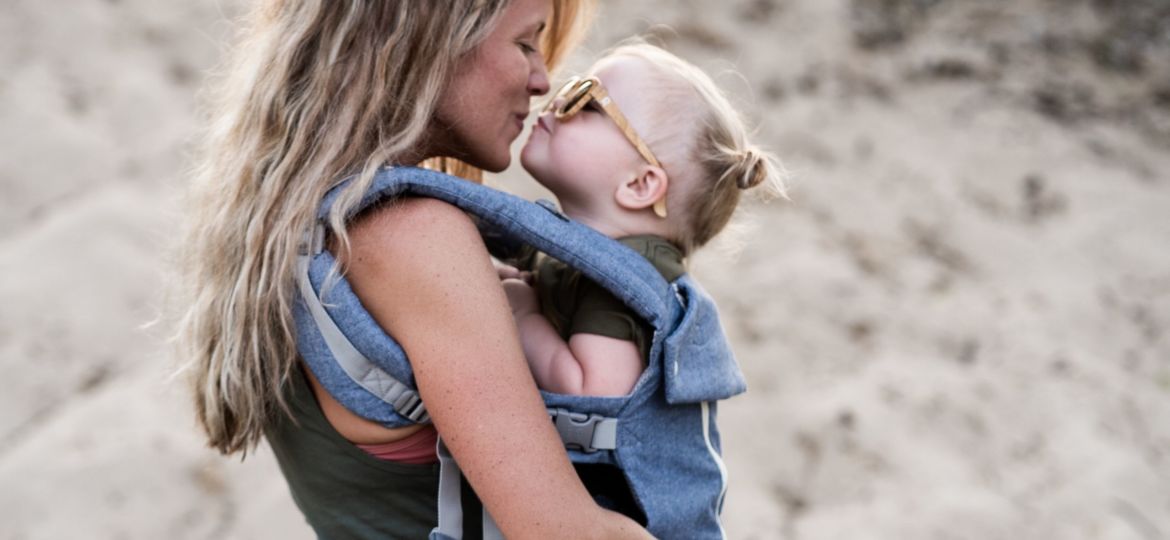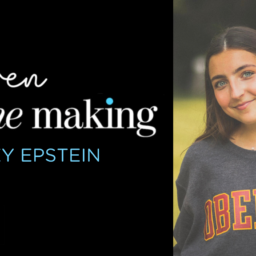
Pop quiz: What is the ultimate freedom?
If you’ve been horrified by the recent Supreme Court ruling in Dobbs vs. Jackson’s Women’s Health Organization, odds are good you’ll answer this question with, “bodily autonomy.”
And for good reason. Bodily autonomy means your body is your own. You have TOTAL agency over yourself. You have agency, and through agency you have power.
So why do so many women both value this freedom and regularly violate their own right to it?
It all begins with how we’re brought up to behave in situations where our bodies are on the line. It sounds so dramatic — a four-year-old reluctantly hugging Aunt Ethel setting the precedent for violating one’s own bodily autonomy over a lifetime of experiences … but here we are. Uncomfortable coworker hugs. Painful pelvic exams. Grinning and bearing it in so many situations.
So how do we break this cycle? How do we raise kids who are unapologetically rooted in their bodily autonomy? Who respect the same fundamental right in others? Kids who understand, value, and honor consent?
And the million-dollar question — How do we do this while battling our own upbringing?
The same way we do everything, friends. By turning to the experts, our own support systems, and faking it ‘til we make it.
As a mom, a woman, and a human, teaching my child about the importance of his bodily autonomy and that of others is a top priority for me, so I sat down with a sampling of Indy women who work with children and families and asked them, “How do we avoid screwing this up?”
Repeat after me, “Va-gi-na”

This can be hard to hear, even for those of us who identify as body positive. Providing children with medically accurate language around their body parts — yes, even those body parts — is a critical aspect of instilling the concepts of bodily autonomy and consent.
Natalie Phillips, BSW, a 21-year veteran of social work in Indianapolis, notes when we teach children the accurate names for their private parts (and that they’re private), they’re less likely to feel that they’ve done something wrong and more likely to disclose sexual abuse.
And if you’re sitting there thinking, “Well, that won’t be my child, no strangers have access to them.”
Think again.

Because 91 percent of children who are sexually abused are abused by someone they know.
Have ongoing conversations with kids and believe them if they tell you they’ve been touched or violated in any way, encourages Crysty Huffman, LCSW of Harper Rose Counseling. She recommends that adults caring for children who are young, non-verbal, or neurodivergent encourage connection, openness, and communication. Ashley Robertson, an Indianapolis sex educator and parenting coach, adds that people often forget young children are language learners. Supporting children with developing or limited language through pictures and slower speech can be helpful.
Kids don’t think it’s “dirty,” so don’t freak out

While your adult lens sexualizes many interactions, young children don’t see the world through that lens. Realize that they’re curious about bodies (theirs, yours, grandma’s, the neighbor’s) because they’re learning how to be in the world, who they are, and how they relate to others. Children will do, say, and ask things adults deem inappropriate. Remember, you’ve had a lifetime of conditioning — and let’s face it, shame.
Jamie Le Sesne Spears of Child Care Answers suggests, “Listen. Allow them to ask the question. Try to control your emotions on the topic. Listening first.” Give the kids you’re around a safe, judgment-free space to ask questions. Then answer their questions or help them find accurate answers.
Listen to them, and teach them to listen to themselves
We know that listening with curious ears and not freaking out is important. Many adults also harp on the idea of kids listening to them (guilty). But teaching kids how to listen to their bodies is something we can occasionally forget. The team at Child Care Answers recommends teaching kids about their belly voice, what adults call a gut feeling. Helping kids understand that when their tummy hurts or they feel scared in a situation, even when it seems like it’s safe, they can listen to their bodies to know how they feel. And because you’ve already demonstrated that you’re a good listener, they’ll be more likely to share it with you. This means more kids will feel safe reporting abuse.
Bodily autonomy is a human right, even if Grandma is tempted to guilt trip over it
This is where most of us struggle. We deeply believe in bodily autonomy as a human right. We model it in our interactions with our children. We defend their right to it with their friends and siblings. So why is it so hard to draw that line with Grandma? Shouldn’t she be one of the people it’s easiest to explain to? She loves the grandkids more than anything! So what if she smothers them in kisses?
There’s no magic solution that’s quick and easy. Sorry about that. But there are a few things experts suggest, such as having conversations in advance of family interactions.
You can model for others how you ask for consent, and offer options that allow kids to express affection in ways they’re comfortable with. Jamie suggests asking for a “hug, kiss, or high five, or even a peace sign.” She adds that you can even lean into the interest areas of kids; for example, she worked with a child who loved Star Wars, so they used “the Force.”
If you are caring for a child, regardless of your relationship to that child, you are their advocate. So, take a deep breath. And remember that this is an opportunity to model respect for boundaries and bodily autonomy as you help that child stand by their kind and firm refusal of a hug or kiss.
Health and safety are the grown-up override to a child’s “no”
If you’ve missed the sensational clickbaity headlines like, “My child gets a choice, and he hasn’t bathed in three years,” then congratulations, you spend way less time leaning into the addictive algorithms online than I do. But if you know exactly what I’m talking about here, you might have had some of the same questions I did about consent and bodily autonomy when it comes to children. What’s reasonable? Where do you draw the line?

Health and safety are the bright lines. When a toddler doesn’t want to hold your hand crossing the street. Or your five-year-old screams “NO!” to a vaccine loud enough for everyone within three square miles to hear them. Or your two-year-old needs a diaper change and you have to pin them down to make it happen.
“‘It’s my job to keep you healthy and safe,’ is my catchphrase. My kids know when I’m going to use it. They are seven and nine now and all I have to say is, ‘What am I going to say here?'” Ashley Robertson shares.
Jamie Le Sesne Spears adds that giving kids options you’re comfortable with also allows for a balance between things that have to be done and giving them opportunities to decide for their own bodies.
Consent is about boundaries, and that includes snacks and TV, too
Sure, this conversation is a LOT about basic human rights. And preventing sexual abuse. And nurturing healthy relationships.
But it’s also about teaching children that they won’t always get their way in life and how to cope with that in healthy ways.
“‘No’ is a taboo word in early childhood and parenting, sometimes,” Jamie shares. But, she adds, having the opportunity to experience “no” in a healthy way is important to children’s development, understanding, and acceptance of boundaries. Jamie recommends modeling this through having opinions and saying no during play. You don’t really care if you’re Barbie or the Hulk, but expressing a preference (bonus points if you pick the child’s favorite and cause additional conflict) can lead to negotiation, problem-solving, and an understanding that others’ opinions and preferences matter, too.
Setting boundaries around snacks and screen time, for example, also feeds into the bodily autonomy and consent conversation by allowing children to experience concrete boundaries. Ashley Robertson recommends, “Communicate clearly when kids [and] youth have choice and when they do not. Model clear boundaries and follow through with consistency. If you say the kid must wear sunscreen and they have big feelings about it, giving in means they learn their big feelings can influence the reliability of your words. This does not make a kid feel safe and secure. They want you to be reliable.”
You don’t have to lecture. It doesn’t work anyway
I tried. Can confirm, soap-boxing for a five-year-old does not yield results. It does lead to a staggering amount of eye-rolling.
So, what does work?
Play, of course. Hands-on learning. Listening. Opportunities to make mistakes and try again, and again, and again. Here are some ideas:
Tickle and Wrestle
Jamie suggests turning to things you’re probably already doing, like tickle games, wrestling, hugging, and kissing your kids. She shares, “Asking them if they want it, [and if not,] respect your child’s no and stop.” This gives kids the opportunity to experience respect for their bodily autonomy. It provides opportunities to practice withdrawing and refusing consent along with an adult affirming their decision.
Red Light, Green Light
Playing games like Red Light, Green Light is fun, low prep, and can be played with a variety of ages. The game helps to develop self-control and attention for kids. It also teaches children to pay attention to what another person is saying and to stop their bodies when what they want (reaching the caller first) is in conflict with what the caller has said (red light). It sounds simple because you have better self-control as an adult than a three-year-old does, and it’s in part because you’ve played games like this as a kid.
Family Pets
Ashley also shares that engaging children with pets is a great way to give them hands-on experiences with consent and bodily autonomy as it relates to others, especially those that may not be able to verbally consent. “Pets deserve to have their bodily autonomy respected. It’s not cute or funny to blow in a dog’s face over and over until they become irritated. It’s disrespectful. Adults of the household need to model respectful behavior to pets. Pets need to have a safe space away from children that they can access any time they need space. I recommend crate training for dogs.”
Ashley highlights a few tips for successfully managing interactions between children and pets including:
- Always monitoring young children around pets
- Monitoring older children until they are “reliably respectful”
- Erring on the side of safety
- Praising positive behaviors from both kids and pets, repeatedly
Storytime
Reading to children is always a great choice. It goes deeper than just entertainment. These are opportunities to discuss tough topics using someone else’s more eloquent language. Check your local library, and don’t be shy about walking up to a children’s librarian for a recommendation. Child Care Answers also has a list of recommended books to read.
Will all of this be easy? Absolutely not. It won’t go the way you imagined every time. But it’ll always be a conversation worth having. Over and over again.
Bodily autonomy and consent is a second language to many adults. For the sake of the growing humans we nurture — and for our own sake — it’s time to practice.
Una Hartzell-Baird (she/her) was voted most likely to be the person who chats you up in the grocery line. She’s an avid reader and a fierce lover of vulgar words. You can find her on LinkedIn and Facebook.
All of our content—including this article—is completely free. However, we’d love if you would please consider supporting our journalism with an Indy Maven membership.











